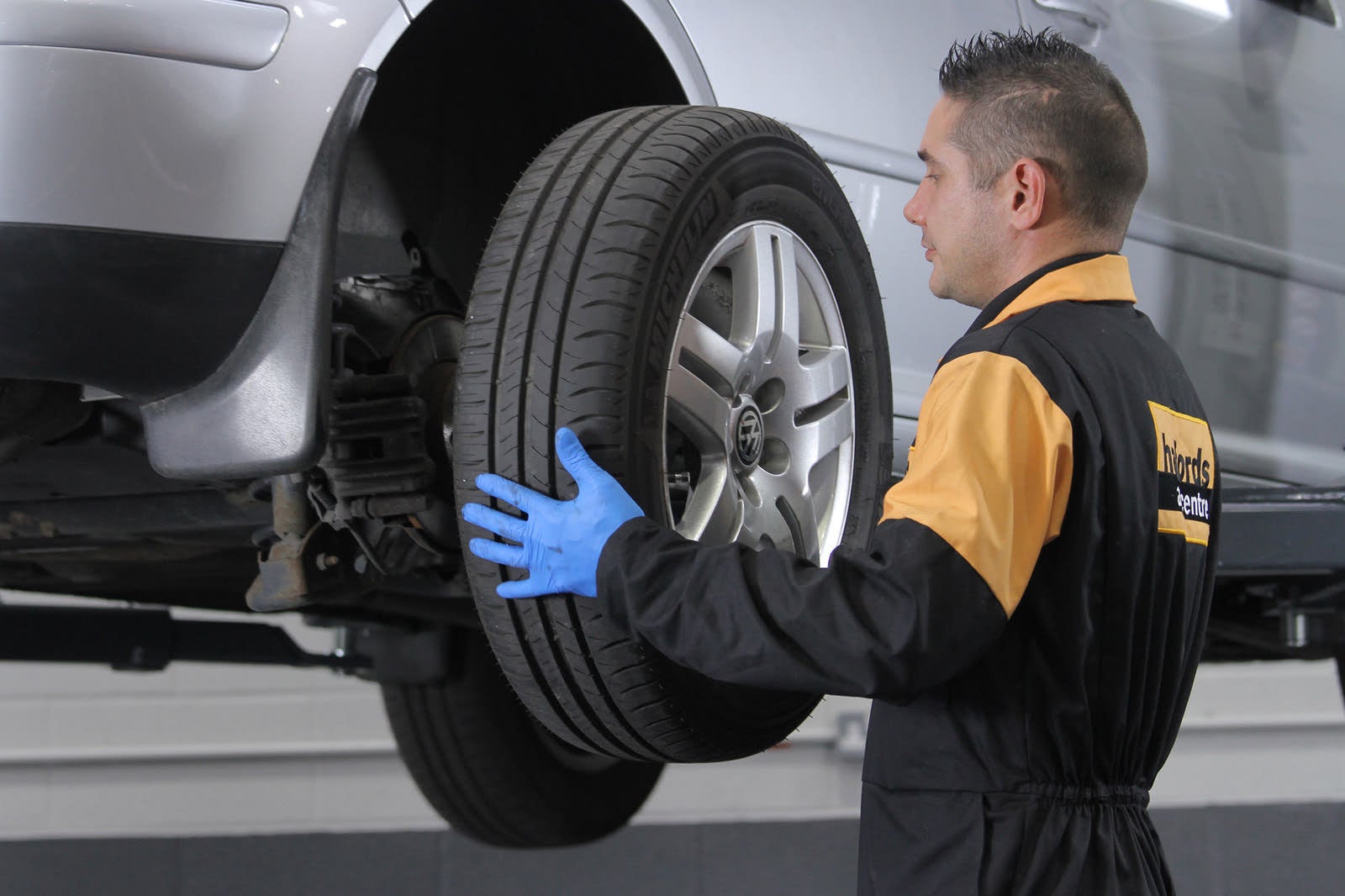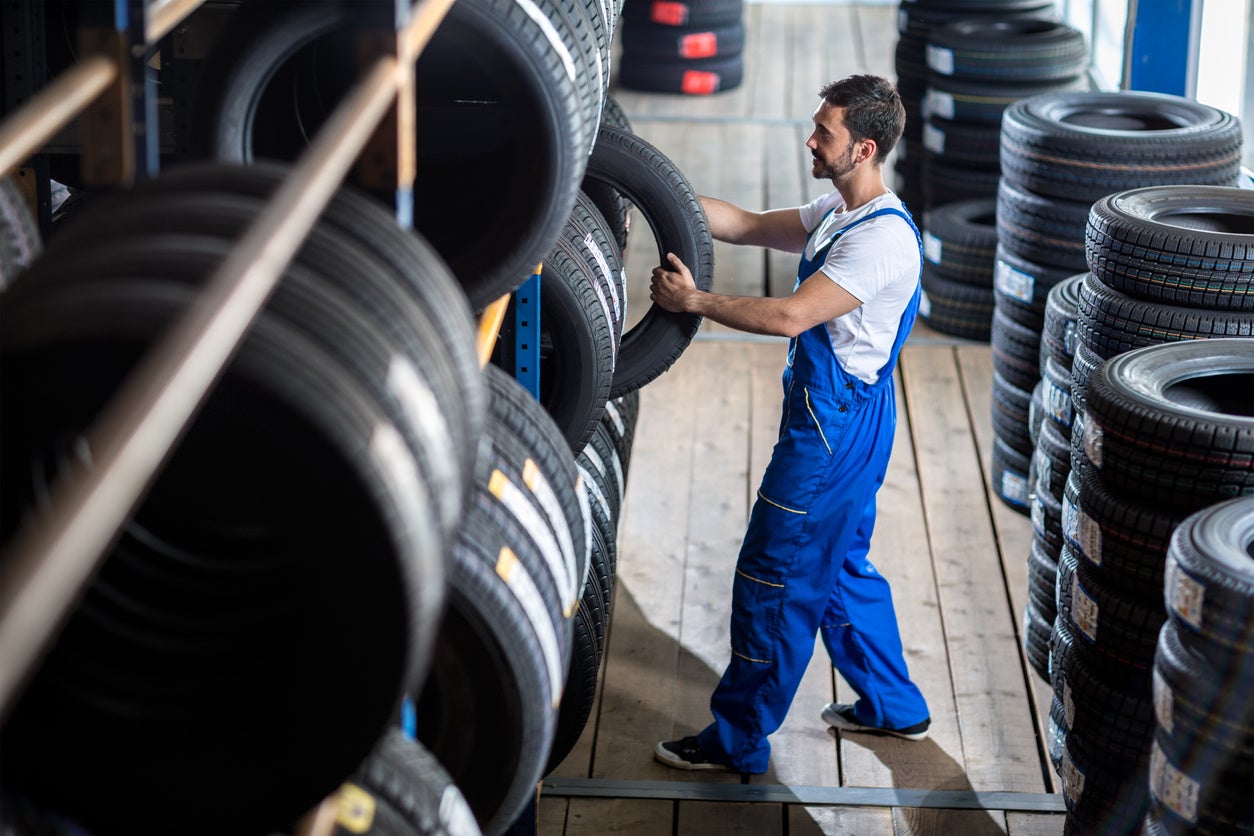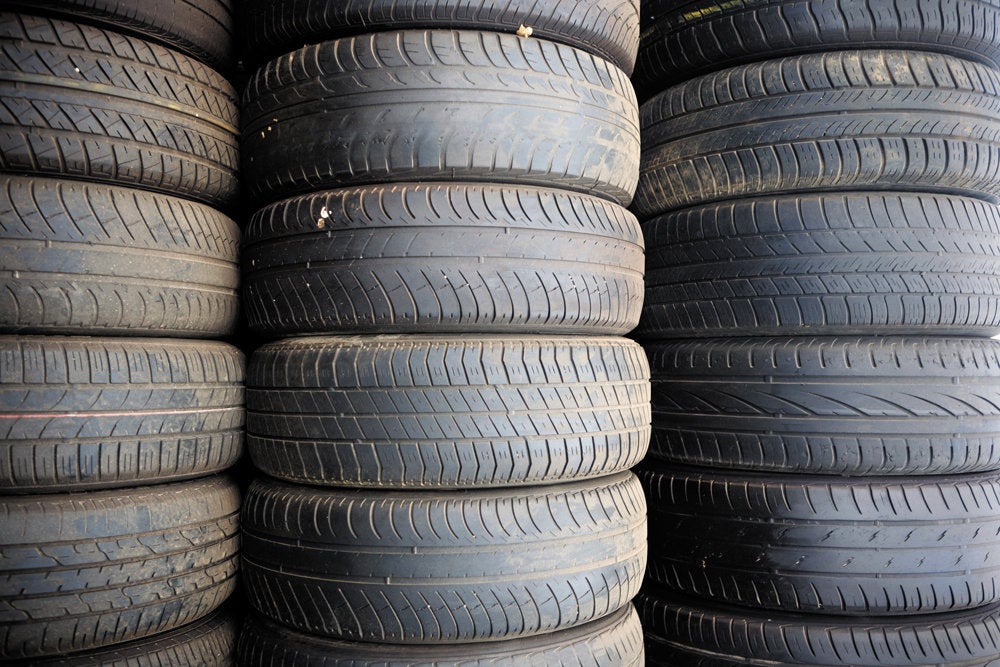Buying new tyres for your car can feel a bit like buying wine in a restaurant. The temptation is to pick the second cheapest option and hope for the best, but while a bad bottle of wine can ruin a good meal, the consequences of choosing the wrong tyres could be much worse. Here are our top tips for finding the best car tyres for you.

Time to Change
Tyres tend to require changing either because they are worn out or because they are damaged. The latter might be as simple as a puncture or as dramatic as a blow out, where the tyre suddenly loses all pressure.
Whatever the reason – and even if you’re using a spare to get you home – it’s important not to put off sorting replacement tyres. They are, after all, the only thing connecting your car with the road. Worn tyres with a low tread depth are more prone to sudden blowouts, and will be less effective at gripping the road while cornering, even in dry conditions. And in wet conditions, they'll make your car more prone to aquaplaning. Braking distance will be longer with worn tyres in any road condition.
Where to Buy
Tyres can be bought at a garage, such as a franchised dealership, at a specialist tyre-fitter or service centre, or online, using a retailer like Blackcircles, Tyre Leader or My Tyres. Don’t assume that the latter is cheapest, particularly as you’ll have to pay to have the tyres fitted when they arrive, either at a garage or through the seller’s mobile fitting service. Buying in person at a franchised dealership or tyre-fitter also means you can haggle on the price, often with good results, and you might be able to take advantage of special offers.

What to Buy
With a few outlets to choose from, it pays to shop around for quotes. For this, you’ll need to know what tyre size to buy, which you can find out by checking what tyres are already on your car or by looking in your owner’s manual. Specifically, you’re looking for a bit of writing on the side of your tyre that says something like “225/55 R16.” Here’s what this all means:
- 225 refers to the width of the tyre in millimetres.
- 55 is the aspect ratio, or the height of the tyre’s sidewall (the part of the tyre where you’ll find the writing) in relation to its width.
- R stands for Radial, which is the type of construction used for all modern car tyres. You won’t see any other letter here.
- 16 is the wheel size the tyre is designed for, in this case 16 inches.
In addition, a tyre might have a load index and speed rating, such as “91W”. Here, the number refers to the load rating, or how much weight the tyre has been designed to carry, and the letter indicates the maximum speed at which the tyre has been tested to perform. The higher the number, the more weight the tyre can handle, and the further down the alphabet the letter, the faster the tyre can travel. There’s no point in buying a tyre rated to perform at a speed higher than your car can ultimately go, but you should still check the speed rating, as driving on a tyre that is not properly rated for your vehicle could invalidate your insurance.
In certain cases, you might also find that a car was first delivered on tyres developed especially for it. A tyre with an “N” marking on the sidewall, for example, has been designed specifically for use on a Porsche, while “J” markings indicate it is for a Jaguar. Choosing these tyres over any other is not a legal requirement, but can be desirable in very high performance cars, as they will allow you to fully appreciate the car’s capabilities.
Tyre Labels
In addition to the details stamped on the side of the tyre, there will also be a tyre label in the form of a sticker, which must be replicated in any promotional material. The goal of this label is to give shoppers an idea of the tyre’s environmental and performance credentials, with the rating divided into three areas:
-
Fuel economy: This is a measure of the tyre’s rolling resistance, with performance rated on a scale of A (best) through to G (worst). The less rolling resistance, the more economical the tyre will be when it comes to fuel consumption.
-
Wet grip: Tyres are put through a straight-line wet braking test to assess their stopping distance on the same A to G scale. The purpose of this test is to ensure tyre makers don’t compromise grip in the pursuit of fuel economy.
-
Noise: When tyres roll along the road, they generate noise, which can be tiring for people inside the car and creates noise pollution for those outside. Tyre noise is measured and printed on the label as a decibel rating. There are also three bars; the quietest tyres have only the first bar filled in, while the loudest have all three.

Part-Worn Tyres
Tyre price is partly dictated by size and how common that size is. But there are different grades of tyres, too. The cheapest you’ll find are likely to be part-worn. These tyres have been used on another vehicle but still have some life in them. As such, part-worn tyres might look like a tempting deal, but by the time you’ve factored in that you'll need to replace them sooner, the savings don’t look nearly as good.
In addition, while part-worn tyres are still technically required to conform to legal standards and must be properly marked, studies in the past have found this isn’t always the case.
Budget Tyres
The next step up the ladder are budget tyres. As with all tyres sold in the UK, these must meet a certain legal standard. However, while they might look like good value on price alone, independent tyre tests have long demonstrated such tyres offer reduced performance when it comes to longevity, noise, and wet braking.
If you cover only a small annual mileage at low speeds or do most of your driving in the summer, when grip levels are more comparable to those of pricier tyres, they might be worth considering. But for most drivers, opting for budget tyres is a false economy.
Mid-Range Tyres
Moving up to mid-range tyres will deliver something made by a tyre manufacturer you might have a chance of recognising, such as Avon, Cooper, Firestone, Hankook, Falken, Kumho, Uniroyal or Yokohama. But even the lesser-known mid-range tyre brands have still spent time and money on thorough development to take their tyres above and beyond the minimum legal standards.
As a result, mid-range tyres will be built to a much higher specification than their budget equivalents, resulting in improved wet-weather performance and, in particular, a longer life.

Premium Tyres
Move to the top of the tyre tree and you’ll find premium brands demonstrating their latest technologies. These include Continental, Goodyear, Michelin, Pirelli, Bridgestone and Dunlop. There's some overlap between premium and mid-range – the more established brands do cheaper tyres as well as higher-end products, and the mid-range brands sometimes have performance offerings too.
You can expect improvements in every area over mid-range tyres. In addition, the drop-off in performance as the tyre wears should be less exaggerated, although this can still vary between brands.
As the name suggests, premium tyres tend to be the most expensive to buy and are often associated with more expensive cars or vehicles that need performance tyres. However, they also often appear on family cars and SUVs and can even be used on city cars to great effect.
Get a Grip
For reasons of both safety and longevity, we advise caution when it comes to choosing part-worn or budget tyres, because in this market independent research has demonstrated time and again that you really do get what you pay for.
Also, bear in mind that it’s best practice to replace all four tyres at the same time and certainly to avoid using mismatched tyres across an axle, which could have a detrimental effect on how your car handles. In addition, if you’re thinking about a tyre that will perform well in cold weather, check out our guide to winter tyres.
Ultimately, what tyres you choose comes down to a balance of how much you are willing to spend to achieve a certain level of performance. The good news is that tyre labelling and independent tests can aid your research and with such a diverse marketplace, there’s plenty of opportunity to shop around for the best deal.
